Population Genetics
Population genetics deals with the abundance of different alleles within a population and the manner in which the abundance of a particular allele increases, decreases, or remains the same with time. The genetic recombination that occurs during sexual reproduction is important only if the two sexual partners have differing genotypes. A cross between two plants that are A1A1B1B1 X A2A2B2B2 produces offspring that have the genotype A1A2B1B2, which is different from that of either parent. Crossing-over also increases genetic diversity in populations.
The total number of alleles in all the sex cells of all individuals of a population constitutes the gene pool of the population. Imagine that gene A has four alleles—A1, A2, A3, and A4. If the population consists of 1 million individual plants, each with 100 flowers and each flower producing on average 100 sex cells (sperm cells and egg cells), the gene pool contains 10 billion haploid sex cells. The alleles are probably not present in equal numbers; for instance, 60% of all gametes may be A,, 20% A2, 15% A3, and 5% A4. Will this ratio be the same for the population next year or in the next generation? Early in the 20th century, two biologists, G. H. Hardy and G. Weinberg, demonstrated mathematically that if only sexual reproduction is considered, the ratio remains constant over time; even if an increase or decrease occurs in the total number of individuals or gametes, the ratios do not change. Sexual reproduction alone does not change the gene pool of a population; if no other factors were involved, the gene pool would remain constant forever.
FACTORS THAT CAUSE THE GENE POOL TO CHANGE
Although it is possible theoretically for a gene pool to remain constant, in reality, changing allele frequencies are the rule, because populations are always affected by factors other than sexual reproduction.
Mutation. All genomes are subjected to mutagenic factors, and mutations occur continually. Because of mutation, existing alleles decrease in frequency and new alleles increase. Whether or not mutation is significant depends in part on the population's size. In the population described earlier, there were 10 billion copies of gene A, and 60% were the allele A1. Therefore, there were 10,000,000,000 X 0.6 = 6,000,000,000 copies of A1; if one mutates to become a new allele, A5, then the frequency of A1 drops to 5,999,999,999, which is still pretty close to 60%. A5 exists as just one copy out of 10 billion, so its frequency is extremely small; however, the presence of one copy is an infinite increase over zero copies, and the existence of even a single copy should not be ignored.
Accidents. Accidents are events that an organism cannot adapt to, such as the collision of alarge meteorite with Earth. When a meteorite of sufficient size strikes Earth, a large region of Earth's surface is destroyed, killing all life in the area. All organisms, along with all their alleles, are eliminated. If by chance the area of impact had included the single individual that had just obtained A5 by mutation, then A5 would no longer exist. If the population in the impact area has the same gene frequencies as the general population, the alleles are eliminated in the same proportions as they exist generally, and no change in allele frequency occurs. If the impact area had an unusually high number of a particular allele, for instance A3, then A3 is affected more than the other alleles, so the allele frequency of the gene pool of the survivors is altered.
Many phenomena qualify as accidents. A volcanic eruption produces poisonous gases and molten rock that destroy everything within a limited area. Infrequent floods, hailstorms, or droughts can act as accidents for plants too small and delicate to become adapted to those events; all individuals in the affected area are killed. For other species that consist of plants with larger bodies, such natural phenomena act as selective forces, removing the weaker, less well-adapted individuals but not affecting the more well-adapted members (Fig. 1). The continental drift of Antarctica southward from a temperate region to the South Pole was an accident for all the plants living on it. While located in the temperate latitudes, Antarctica had a rich flora with abundant plant life; as it drifted southward, it entered a region too cold and severe for any plant life to survive. All individuals and their alleles were eliminated (Fig. 2).
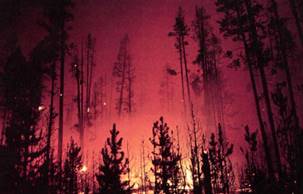
FIGURE 1:This large forest fire in Yellowstone Park in 1988 was an accident for certain plants, a selective force for others. Many small plants cannot possibly become adapted to such fires; the heat not only kills the plants but also destroys the humus layer and kills buried seeds. All their alleles are destroyed indiscriminately. However, certain large trees can survive most fires; their bark is thick enough to insulate the vascular cambium. Plants that have alleles for extra thick bark survive; any plants that have alleles for thin bark die. For this species, the allele frequency after the fire differs from that before the fire.
Accidents can be small events as well as large ones. Once an allele is formed, A5 £r instance, its numbers may increase as it is used in sexual reproduction; after a few years there may be ten individuals with the A5 allele. The individuals are closely related and probably located close together because most seeds do not travel very far. It is possible for a local disturbance to eliminate all ten: an avalanche, a herd of grazing animals, or the construction of a highway.
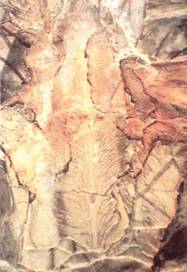
FIGURE 2:In earlier times, Antarctica was located in temperate latitudes and supported many plants, such as this Glossopteris. Continental drift moved Antarctica to the South Pole, into conditions for which no alleles are able to produce an adapted phenotype. All plants perished. trees that are cultivated for lumber and paper are also subjected to artificial selection.
Artificial Selection. Artificial selection is the process in which humans purposefully change the allele frequency of a gene pool. The most obvious examples are the selective breeding of crop plants and domestic animals (Fig. 3). Plant breeders continually examine both wild populations and fields of cultivated plants, searching for individuals that have desirable qualities such as resistance to disease, increased protein content in seeds and ability to survive with less water or fertilizer. When plants with beneficial qualities are found, they are collected and used in breeding programs to produce seed for future crops Consider just wheat, rice, and corn: Almost the entire world populations of these three species consist of cultivated plants; very few of the natural ancestors still exist in the wild Consequently, the gene pool for each is made up almost entirely of alleles that have been artificially selected for thousands of years.
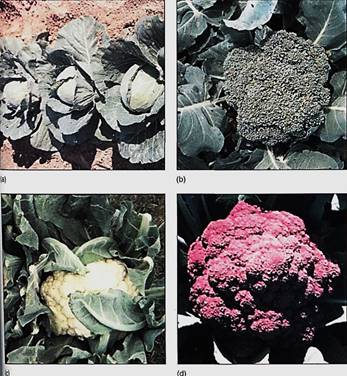
FIGURE 3: Artificial selection by crop breeders has resulted in increased frequency of certain alleles and the elimination of others. The allele frequency of the population changes dramatically from year to year, depending on whether farmers decide to grow one variety or the other. Cabbage (a), broccoli (b), and cauliflower (c) are all the same species (as are brussel sprouts as well) and all evolved from the same ancestor, but their evolution was controlled by artificial selection for certain traits in each variety. Recently, artificial selection has produced the variety Violet Queen that stores large amounts of pigment (d).
Artificial selection is also used to produce ornamental plants that flower more abundantly or for a longer time. Artificial selection has also been used to alter flower color and size and to make the plants hardy in regions where they otherwise could not grow. The trees that are cultivated for lumber and paper are also subjected to artificial selection.
Artificial selection is often carried out in conjunction with artificial mutation. Plants are exposed to mutagens such as acridine dyes or irradiation with ultraviolet light or gamma rays to increase the number of new alleles that come into existence. The plants are allowed to grow to see how the new alleles affect the phenotype, and those plants with the desired phenotypic traits are used in selective breeding programs.
Natural Selection. Natural selection, which is the most significant factor causing gene pool changes, is usually described as survival of the fittest: Those individuals most adapted to an environment survive whereas those less adapted do not. However, natural selection is such an important factor in evolution that it must be given careful attention. Two conditions must be met before natural selection can occur:
- The population must produce more offspring than can possibly grow and survive to maturity in that habitat. This condition is almost always valid for plants anywhere on Earth. Most plants produce hundreds of seeds, which often germinate near the parent plant (Fig. 4). Even in species with wind-dispersed seeds, such as maples or milkweeds, most seeds do not travel far. Consequently, the ground can be covered with hundreds of seedlings crowded closely together, and there simply is not enough room to accommodate the physical bulk of so many plants as they grow.

FIGURE 4 :Even if animals carry away many of the fruits of this red elderberry (Sambucus racemosa), most fall and germinate in its immediate neighborhood, and there are too many seedlings to fit into the space physically. Also, the tree will produce seed abundantly for many years. (Zig Leszczynski/Earth Scenes).
Besides limited resources, the number of individuals that can survive in a particular habitat is affected by predators, pathogens, and competitors. All plants are faced with attack by herbivorous animals, ranging from almost microscopic mites and nematodes to much larger beetles, reptiles, birds, and mammals. Animals not only eat plants but may also lay eggs in them, bore into tree trunks for nesting sites, walk on them, and rob nectar without carrying out pollination. Pathogenic fungi and bacteria are similarly harmful. Competitors are other organisms that use the same resources the plant needs to survive. When root systems grow together, the two plants compete for the same water and nutrients. If two species are pollinated by the same species of insect or bird, they must compete for the attention of the pollinators. In a forest, plants compete for light: Those that can grow tallest receive the most light; those that have shorter trunks receive only dim light. All these activities adversely affect the plant's ability to reproduce and may cause the plant's death.
- The second condition necessary for natural selection is that the progeny must differ from each other in their types of alleles (Fig. 5). If they are all identical, all are affected by adversity in the same way and to the same degree. Under crowded conditions, probably all are stunted similarly, all grow poorly, and finally none reaches reproductive maturity. If all individuals of a species are equally susceptible to a pathogenic fungus, no increase in survivability and fitness occurs as the result of a fungal attack. Even if some survive and reproduce, they are identical genetically to those that died, so no change occurs in allele frequency; natural selection has not occurred.
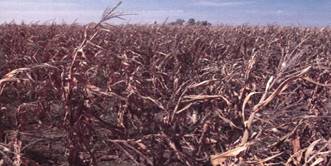
FIGURE 5:The summer of 1988 produced one of the most severe droughts on record in the American Midwest, our primary corn-growing area. Under natural conditions, such a drought would have resulted in the natural selection of drought-resistant plants; all corn plants of 1989 would have been the progeny of the resistant plants that survived, and all would have carried alleles for drought resistance. But natural selection did not occur because there was no genetic variability among the corn plants; corn is one of our most highly inbred crops, and all seed corn is produced by careful crosses of absolutely uniform parents. Consequently, of the trillions of plants affected by the drought, none was more or less resistant than any other. Any that survived did so not by genetics, but by accident: receiving a little extra rain or being in a valley where extra moisture collected. (Grant Heilman/Grant Heilman Photography)
When genetic diversity exists among individuals, differential survival can occur. If some members of the population have an allele that gives them increased resistance to fungi, those plants should fare much better during an outbreak of fungus in the population than those lacking the allele. If the fungus is so virulent that it often kills the plants it attacks, the allele frequency of the population is changed radically after infection—the resistance allele constitutes a much greater percentage of the gene pool. Natural selection operates even if the fungus only weakens plants but does not kill them outright; the weakened plants should produce fewer seeds than do the resistant, healthy plants.
Competition for water and nutrients among crowded root systems also acts as a selective force; alleles that allow roots to absorb water and nutrients more efficiently have an advantage. II most roots can no longer absorb water when the soil has a water potential of —0.8 MPa, an allele that alters root metabolism such that it can extract water even at -1.0 MPa enables the plant to grow when others cannot. The mutation has a selective advantage—the plant is more fit or adapted to conditions of crowding.
Natural selection refers to the differential survival among organisms that have different phenotypes. Natural selection can act only on pre-existing alleles; it does not cause the mutations. The presence of a fungus does not cause plants to become resistant; if none had been resistant before, all individuals would be adversely affected. The advantageous allele must exist first. But if an allele for resistance does exist, natural selection can cause the population to become resistant by the preferential survival of resistant individuals, even though it cannot cause an individual to become resistant. A population or species evolves, but an individual does not. Similarly, a population may become more adapted but a single individual does not change; it cannot become more adapted during its life time.
Natural selection does not always result from the action of an agent outside the organism Although many selection pressures are external—pathogenic fungi and dry, hot climate—any factor that causes one plant to produce more progeny than other plants is a selective factor (Fig. 6. If an allele causes chloroplasts to photosynthesize more efficiently, plants with that allele can produce carbohydrates more rapidly than plants that lack the allele; the former plants grow faster and produce more seeds, at least half of which carry the advantageous allele.
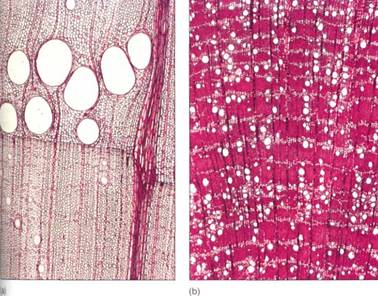
FIGURE 6: (a) This oak wood contains wide vessels that can conduct water with relatively little friction (X 80). (b) This Casuarina wood has vessels so narrow that the water in them is strongly reinforced and cavitation is almost impossible under natural conditions. Even though vessels are completely internal, they still affect the plant's survival relative to its environment (X 80).
Factors that are Not Part of Natural Selection. Natural selection can be understood more clearly and accurately if you realize that certain factors are not part of natural selection at all: Natural selection does not include purpose, intention, planning, or voluntary decision-making. Whenever we say that "plants do something in order to . . . ," we are suggesting that the plants can plan their activities and have purpose, which is not true. It is not correct to say that plants produce leaves in order to photosynthesize more efficiently than those that do not have leaves. The resistance of a population of plants to a fungus is nothing more than the result of the preferential survival of the plants' ancestors because they had the allele for resistance whereas their competitors did not. Although plants that have this allele in the presence of the fungus have a selective advantage, the plants do not have the allele in order to protect themselves. Similarly, plants do not produce nectar in order to attract pollinators; those plants in the past that did produce nectar happened to be pollinated more often than others that did not produce nectar, so the alleles for nectar production were increased in the population. At present those plants that secrete nectar are visited by pollinators, but there is no purpose, intent, or planning by the plant. Only humans and other primates act with intent and purpose, and this applies only to our voluntary actions. Even humans do not digest food in order to have an energy supply; rather, our autonomic nervous system and cell metabolism have automatic responses to the presence of food in the small intestine that cause the secretion of digestive juices, the absorption of monomers, their distribution through the hepatic portal system, and their respiration by cytoplasm and mitochondria. We have no control over this result of our evolutionary history. This may seem to be just a trivial problem of semantics, because everyone knows what we mean, but statements should be accurate, not sloppy. If we are not meticulous in how we express our ideas, we will not be meticulous in how we think, and important details will be lost.
SITUATIONS IN WHICH NATURAL SELECTION DOES NOT OPERATE
Further understanding of natural selection can be gained by considering several cases in which it does not operate. As already mentioned, it cannot operate if all individuals of a population are identical genetically or if it is impossible to become adapted to a certain condition. Competition does not occur in a habitat that can support the growth and reproduction of all individuals; if survival is universal, natural selection does not occur. Situations like this occur in newly opened habitats such as a plowed field. All seeds present may germinate and grow vigorously, even the ones not well adapted for competition. Because all survive, no natural selection has occurred. Other examples are the sides of a road cut, a recently burned area, or a recently flooded plain covered with rich sediments.
We must be careful here; if the road cut passes through a heavy, dark forest, the newly exposed sides may be too bright and exposed for seedlings from plants adapted to the forest. In this case, the environment favors those plants that can tolerate full sunlight and suppresses those that require shade; many selection pressures, but not all, have been eliminated, and some natural selection can still occur.
MULTIPLE SELECTION PRESSURES
In many cases, the loss of individuals and reduced reproduction are not caused by a single factor, such as a pathogenic fungus. Instead, the plants are also affected by insect attack, drought, cold, need for pollinators, and need for a mechanism to disperse their seeds, as well as the efficiency of their own metabolism, such as the ability of their membranes to pump ions, the capacity to reduce nitrogen, or the efficiency of producing just enough P-protein in the phloem without a wasteful, non-useful excess.
A mutation that produces an allele that would result in improved fitness is potentially advantageous selectively, but it may never have the opportunity to improve the fitness of the plant or the species. A mutation that results in improved cold hardiness may be eliminated from the gene pool if the plant carrying the new allele is killed by fungus or drought or cannot reproduce because of poor competition for pollinators. Such a loss of this allele is simply an accident.
However, if the new allele for cold hardiness does survive, it may be able to improve the species. If cold winters are common, this allele greatly improves fitness, and its frequency may increase rapidly. If cold winters are infrequent, they do not exert a strong selection pressure, the allele does not improve fitness very much, and its frequency may remain low for years until a harsh winter does occur. Until that time, the allele's frequency is determined by several factors. It may be tightly linked to an allele that is strongly advantageous for an important condition. For instance, the cold hardiness allele may be on the same chromosome as the allele for resistance to fungi. If the two genes are so close on the same chromosome that crossing-over virtually never occurs between them in prophase
I, the presence of fungi selects not only for the antifungal allele but also for the cold hardiness allele, just by coincidence.
The cold hardiness allele may affect the plant in various ways besides the ability to withstand cold; that is, pleiotropic effects may operate. If these are also advantageous under common conditions, the allele increases in frequency. But often many of the "side effects" are disadvantageous. Many improvements to phenotype have some negative aspects, at least in terms of cost. Increased cold hardiness may be due to thicker, more sclerified bud scales with a thick layer of wax. These require the input of increased amounts of nutrients and energy which could have been used to produce more seeds. Thus, whereas this allele may be strongly advantageous in an environment with frequent cold winters, it may be disadvantageous in an environment where winters are always mild. Whether a particular allele is beneficial or not depends entirely on the habitat, which may change with time. As the environment changes, the selection pressures change and certain features become more or less advantageous.
 الاكثر قراءة في مواضيع عامة في علم النبات
الاكثر قراءة في مواضيع عامة في علم النبات
 اخر الاخبار
اخر الاخبار
اخبار العتبة العباسية المقدسة


